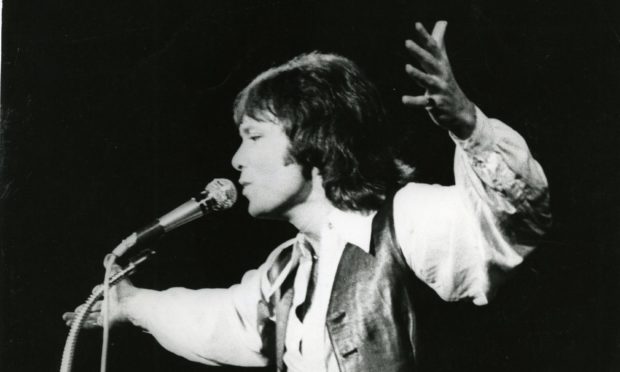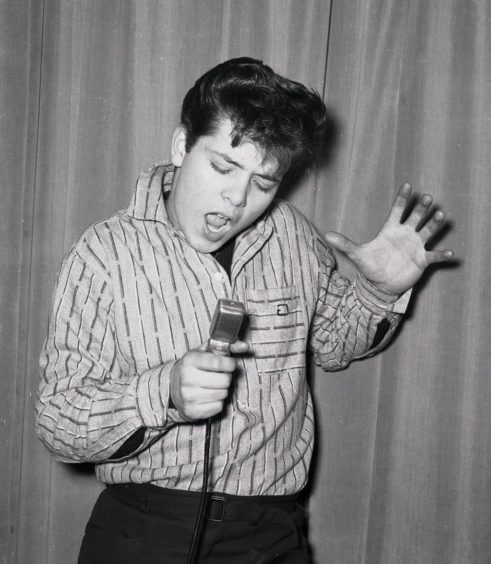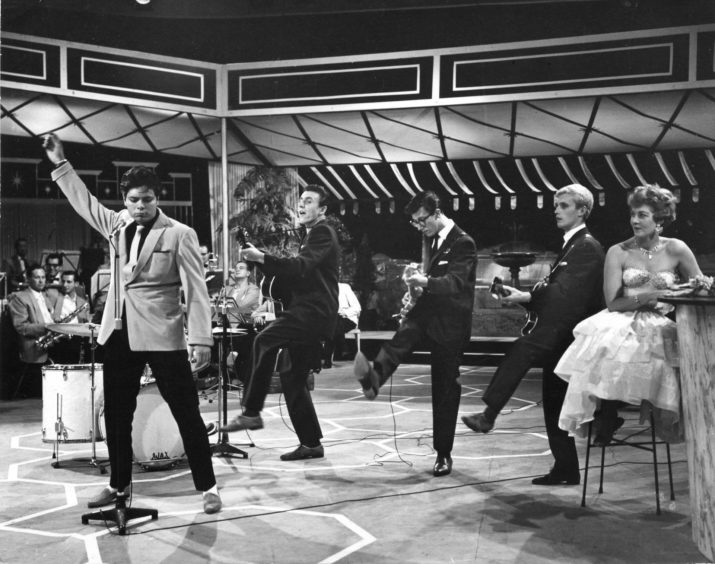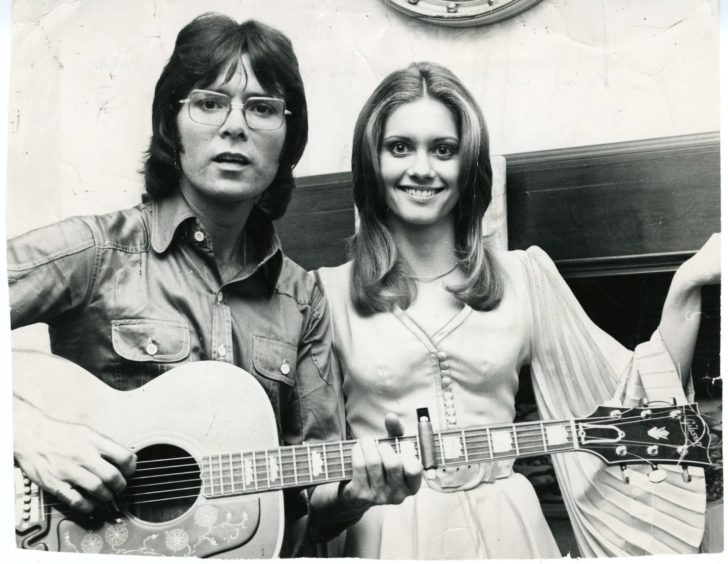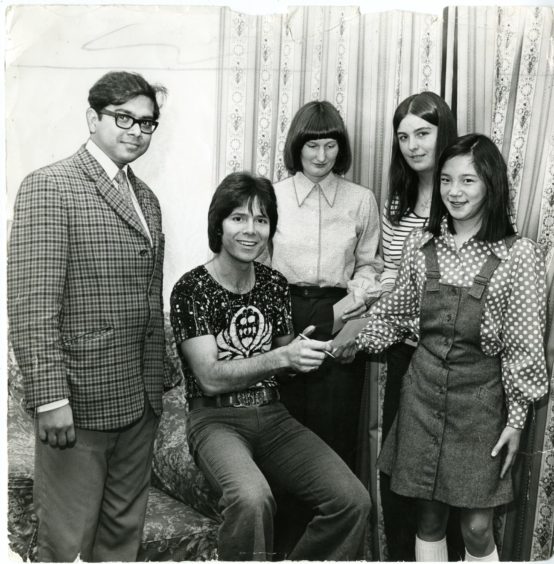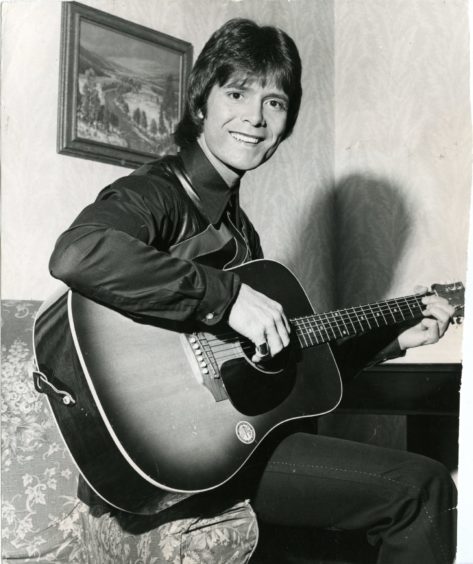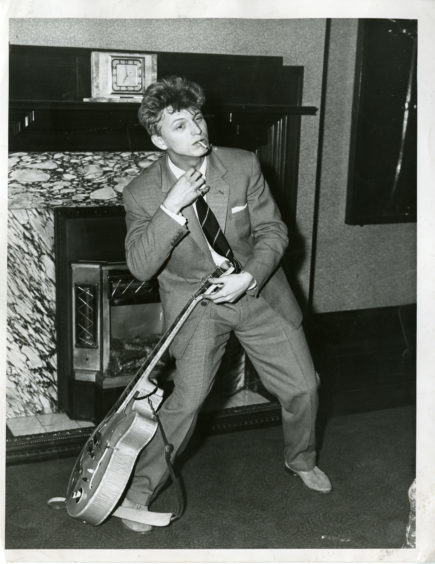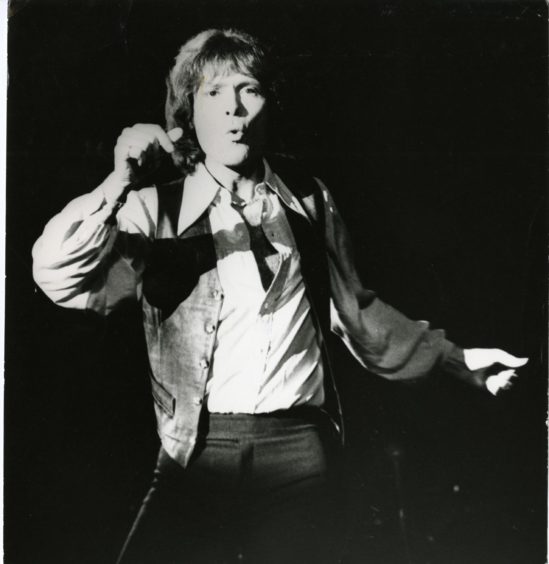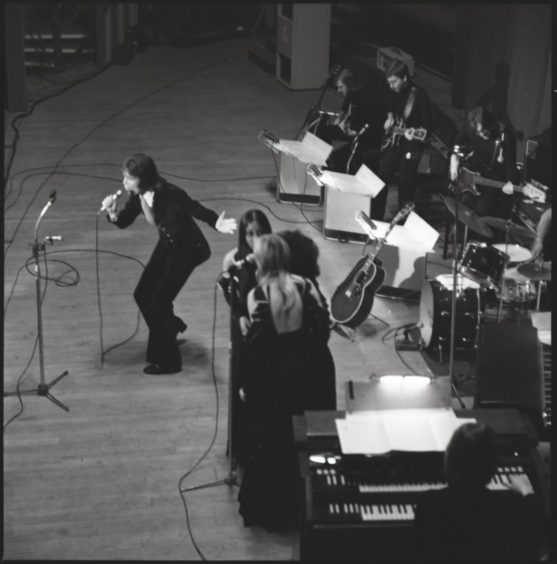Fans went wild and battled with police when Sir Cliff Richard’s first UK concert tour arrived in Dundee.
The Bachelor Boy celebrates his 80th birthday with a UK tour which has now been rescheduled to 2021 but it’s unlikely there will be a repeat of the screaming scenes during two shows at the Gaumont in the city’s Cowgate in September 1959.
Tickets were 10 shillings and six pence and 3,000 teenagers attended both concerts.
Predictably there was mass hysteria at the show and at the Royal Hotel where Sir Cliff and the Shadows were staying.
Move It
The band was barely audible above the cries of girls and some fainted as they played 10 numbers including Move It, Never Mind, Mean Streak and Livin’ Doll which was the biggest selling single of 1959 in the UK.
Sir Cliff wore a shiny pink jacket and tie and the audience pressed forward against the protective barrier in front of the orchestra pit which bent under the strain and one girl was removed when she rushed to the stage.
During the pop legend’s second performance six youths were taken out of the theatre after a fight with stewards in the stalls.
One youth rushed towards the stage but was turned back by stewards and two police officers were called from outside and they were ejected.
The fans then tried to prevent Sir Cliff from leaving and two girls had to be dragged to safety from under the wheels of a car as officers desperately tried to manoeuvre them on to the pavements.
Later crowds gathered outside the Royal Hotel where their idol was staying.
Smashed glass
Sir Cliff’s taxi cruised around the city for half an hour to see if they would disperse, but again the police had to clear the way and the management of the Royal Hotel was less pleased when a glass swing door was smashed in the battle between fans and police.
Andrew Murray Scott is the author of Modern Dundee: Life in the City since World War II.
The visit of Sir Cliff to play two shows at the Gaumont in Dundee is recalled in the hugely popular book which is now in its fourth edition.
He said: “Cliff appeared at the Gaumont Cinema on September 3 1959 towards the end of a UK-wide concert tour and was at the peak of early success with several hits in the charts, including his million-seller Livin’ Doll.
“His career had begun just 13 months before with his debut single Move It/Schoolboy Crush and follow ups High Class Baby and Livin’, Lovin’ Doll had done well.”
Sir Cliff, whose real name is Harry Webb, had released his debut album in April which was recorded in Abbey Road Studios.
Little Richard
“The album featured 16 tracks which were rock ‘n’ roll covers,” said Andy.
“Harry Webb was a huge fan of Little Richard, hence his chosen stage name of Cliff Richard and the album included Reddy Teddy as well as Elvis numbers Too Much and Baby I Don’t Care; Jerry Lee Lewis’ Down The Line and Whole Lotta Shakin; Gene Vincent’s Be Bop a Lula; and Buddy Holly’s That’ll be the Day.
“But there was also an original number – Move It – which was written by an early member of his band, Ian Samwell, and two instrumentals, Driftin and Jet Black from his backing band The Drifters, soon to be renamed The Shadows.
“In my opinion much of the originality and drive of that album came from the musicians.
“The twanginess of Marvin, Welch, Harris and Meehan and their Duane-Eddy style on Move It and their instrumental numbers, raised them above the crowd of UK cover-artists doing American material.
“So Cliff brought a rockabilly show to the Gaumont.
“This was his earliest phase, his lip-curling, Elvis-clone period, when he often wore neon pink drape jackets, dark shirts, tight black trousers and white shoes, but some of these early numbers were the first evidence that non-Americans could produce genuinely exciting rock.”
Andy said he did it more convincingly than the Larry Parnes stable of manufactured rockers like Johnny Gentle or novelty acts like Tommy Steele.
Other ideas
Andy said: “However, his recording manager Norrie Paramor had other ideas and very soon, Cliff was moved into teen movies – his first, Serious Charge – released in summer 1959 included many mainstream-friendly pop numbers including his first million-seller Livin’ Doll which convinced Paramor to move him away from rock ‘n’ roll.
“Many commentators believed rock ‘n’ roll was transient, a phase that would fizzle out!
“Soon Cliff was doing pure pop and saccharine ballads such as Theme for a Dream, When the Girl in your Arms is the Girl in your Heart, and others recorded with the ‘Norrie Paramor Orchestra’, leading to mainstream success with older generations and his astonishing longevity as a performing artist for more than six decades.
“In fact, the length of his career put him in real danger of losing control over copyright of his 1950s and 60s material.
“But Cliff campaigned successfully to extend the period of performers’ copyright from 50 to 70 years and the EU Directive, in September 2011, is known informally as Cliff Richard’s Law.
“Many artists will benefit from this and will have reason to be grateful to him.
“Cliff Richard is still performing live 62 years after his first UK concert tour was received so warmly in Dundee, when he commented that he was ‘knocked-out’ by his Dundee reception.
“It is not known if he meant this ironically given that Tommy Steele, who had appeared at the Caird Hall on May 1 1958, had been literally knocked out for real – unconscious — after a riot broke out after the show.”
Tommy Steele
Steele was submerged in a sea of 300 screaming girls and was injured so seriously he was forced to take two months off from performing.
Steele’s right arm was twisted up his back, his shirt was ripped off and his hair was pulled from his head before stewards and Steele’s manager Larry Parnes got hold of the 20-year-old singer and fought off the screaming fans.
Steele vowed then he would never play Dundee again – and he never did.
Thankfully Sir Cliff did return to Dundee and performed in the city various times in the 1960s and 1970s.
Life and times of a musical icon
Harry Webb was born in Lucknow, India, in 1940.
In those early days, Cliff was still Harry Webb, even when he began singing with The Drifters, a local band.
Cliff was finishing his final year at Cheshunt Secondary Modern in 1956 when he caught the skiffle bug and dad Rodger bought him his first guitar.
Filing clerk
Though he started working as a filing clerk for Atlas Lamps, music was where his heart lay and he formed the Quintones vocal group before singing with the Dick Teague Skiffle Group.
He then joined The Drifters — who became The Shadows after a legal dispute with the American group of the same name — and adopted the stage name Cliff Richard.
Their debut single Move It was described by John Lennon as the first British rock record, and Cliff was marketed as the British Elvis.
“The world was crazy about Elvis and he was my hero, too,” said Cliff.
“All the boys wanted to be like him, but I never actually thought about trying to achieve what he had achieved.
“He was a great inspiration, though.
“When I was singing or playing, I never tried to copy him. People used to say there were similarities, but I never saw it myself.
“He was brilliant and I could just sing and play a little. He got into a great Cadillac while I was getting onto the bus.”
